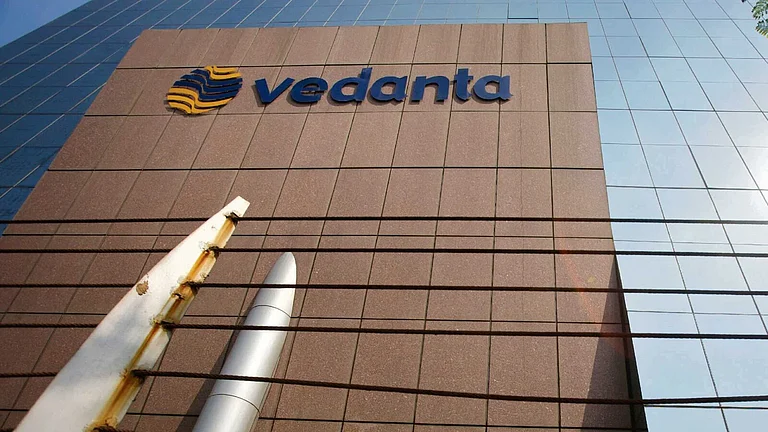The election of Narendra Modi as the prime minister of India came as a surprise to many. Most of the opinion polls (other than Chanakya’s) broadcast on our news channels again got it wrong as they missed the final tally for the Bharatiya Janata Party (BJP) and the National Democratic Alliance (NDA) by a very wide margin.
Opinion polls have been wrong in the past as well, especially during the 2004 and 2009 elections. The equity markets are not faultless either, given that they discounted the incorrect poll scores and then went through an adjustment on the day of the results. Having been wrong twice, this time the markets were hesitant to fully discount the conservative opinion and exit polls, which did not reflect the extent of the Modi wave.
Another problem this time around was that investors mixed politics with their views on the markets. Prior to the election results, almost everyone agreed that if Modi was able to form the government, the markets would be up. However, the same investors were also voters and if they were not voting for the BJP, they found it difficult to be positive about the markets as a bullish outcome was invariably linked to Modi’s victory. As voters, it was correct for them to focus on what should happen in India (and vote accordingly) but as investors, they should have focused on what will (probably) happen, and many missed this distinction.
Many cynics question whether the Gujarat model can be applied at the national level. We think that this is the wrong question to ask, although many parts of the Gujarat model can indeed be applied across the country. If Alan Mulally of Ford had joined Microsoft as CEO, no one would have asked whether the Ford Model of manufacturing would work at Microsoft or not.
In choosing Modi, the country has chosen one of the most hardworking men we have ever seen. How do we know that? By witnessing his presidential-style campaign, where he covered 300,000 km, attended more than 5,000 events and addressed 477 rallies in 25 states since September 2013. Before investors say that they have seen similar energy in politicians in the US, please account for Indian airports, infrastructure, roads and hot weather.
India is used to having very old prime ministers (Dr Manmohan Singh was 72 years old in 2004 when he replaced Atal Bihari Vajpayee, who, at the age of 80, was campaigning for another term). In this context, Modi is rather young at 63 and his energy and stamina is refreshing and welcome. We also know that he is articulate and can
captivate his audience. He was also very successful in his previous job as the chief minister of Gujarat. So India has chosen a young, hardworking, articulate leader who has a strong track record — important credentials for the top job in almost any field. Many readers will invariably ask whether the markets have already discounted these changes and whether the correct strategy should be “buy on rumours and sell on news”. For the last three years, many sectors in India did badly for reasons attributed to the government’s policy paralysis. No one has ever asked why this paralysis was not discounted in the first few weeks or months of
the slowdown.
The election of a new government is not akin to a one-off gain for a company that can be discounted so soon. If our hypothesis and confidence in Modi’s governance plays out, it would change the broad environment for many sectors, stocks and parts of the economy.
We are not the only ones thinking this way. Look at how Morgan Stanley, in their report dated May 12 titled “Analysing risk-reward into election results”, has varied its price targets for financial stocks based on different political outcomes (see: Take your pick). The company called a 260-plus seat tally for NDA as a strong outcome and 220-230 seats as a base case.
The point of this table is not so much to highlight Morgan Stanley’s individual stock recommendations for the near future as to point out just how important political outcomes can be in changing market levels, as both investors and analysts try to visualise a better operating environment for business.
Return in contrast
A common question that investors have is whether stocks have moved ahead of fundamentals as earnings or will the underlying fundamentals not change for the next 9-12 months? We have been fundamental, bottom-up investors for more than 20 years in the Indian markets and are quite sensitive to underlying valuations. However, we also recognise the underlying volatilities of the markets and do not accept the argument that markets and earnings have to go up (or down) step-by-step each quarter or each year.
Over the past 13 years, the Indian market (Sensex in rupee terms) has given a return of 17% per annum. Over the same period, earnings growth of the same index is up 15.4%. This is pretty good evidence of how market performance tracks earnings growth over the medium to long term. The graphic (see: Trajectory of their own) on the next page shows year-on-year details of growth (in earnings and movement in the index.)
Annual numbers show that the markets can be much more volatile than earnings growth and are just as capable of going down 37%, while earnings grow 7.4% (as it happened in the year ending March 2009) as they are of rocketing 82.7% with negative growth in earnings (as it happened in the year ending March 2010). Even in other less dramatic years, it is not easy to see much correlation on a year-to-year basis. Market movements discount the future, incorporate the present and adjust for the past and, therefore, it would be wrong to become bearish on the market solely on the theory that earnings will take time to catch up without looking at the
starting point.
The market is not trading at unreasonable valuations. A recent report by Nomura (dated May 13) is pertinent in order to understand this. Nomura points out that the Sensex is trading at 14.3x one-year forward earnings, up from 13.7x at the beginning of this year and 12.8x in Sep ’13, which was when the rally in capital goods and banking stocks began. Five-year average multiple for the index is 14.8x and the three-year average multiple is 14.1x.
Enough steam left
As compared with its peer group, the Indian market has not really had a runway rally. Compared with the consensus at the start of the year, when everyone (and I mean more or less every investor) expected developed markets to do better than emerging markets, it is indeed true that emerging markets have not done badly with India too faring well. Partly, this has to do with the fact that investors were over-bearish on the Indian market and currency in the middle of 2013 and this is more of a correction from a misplaced correction last year.
Even though foreign investors have been the main buyers of Indian markets, strategist Sakthi Siva of Credit Suisse points out that India does not look like a crowded trade, with net foreign buying on a rolling 12 months basis running at 0.8% of market cap versus 0.5% for the region. According to CS, the market’s return on equity (RoE) of 14.6% is close to trough levels compared with peak RoE of 20% in 2006 and 2007.
Compared with historical purchases, even foreign institutional investor (FII) buying has not been very significant yet. Year till date, FIIs have bought close to $6.5 billion stocks, proportionately less than the $20 billion they invested in 2013, which was by all accounts a bad year for the economy and the markets. Our domestic institutional investors (domestic insurance companies and mutual funds) have matched these purchases by FIIs with their own selling, step-by-step. In 2013, DIIs sold stocks worth $13 billion and, in the year to date, DIIs have sold stocks worth $4 billion. As of now, FIIs have more cash than DIIs have stock. It would be interesting to see the reaction of the market when DIIs exhaust their selling or, better still, become buyers, which we expect will happen within the next six months.
India should be pleased to provide a home for funds redeeming from Japan this year. After pouring nearly $81 billion into the Japanese equity markets from May to December 2013, foreign investors have been disappointed. This is amply reflected in the close to $21 billion sell-off in equities year till date.
Our new prime minister has many low-hanging fruits that he can pick to help the economy and restore business confidence. He will also have the power to take better and quicker decisions. Not plagued by coalition politics, BJP has a good chance to rule India for many years if they do even a half-decent job, and we believe that they will deliver.
Many experts offered their advice and many fund managers took the view that one should wait for the election results before buying stocks. Later, of course, many of them were advising that investors should wait to see who becomes the finance minister. I won’t be surprised if after the FM is on board, investors are advised to see the budget before committing to the markets. Post the budget, I am sure many will want to see the actual implementation of the budget proposals, and by that time it will make sense to wait for how the Christmas season in the US is turning out. Once that is clear, in India, it will be time to review the budget of 2015 and then whether the monsoons are on track.
Hence, investing in equities needs to result from an asset allocation exercise rather than trying to time the market and invest around events. This election is a defining moment in India’s development and will coincide with a new economic cycle, which is already under way. Trying to fine-tune one’s entry into the market is difficult. Investors should start investing in the market and gradually build their intended allocation. We believe that Indian retail investors should invest via good mutual funds, of which there are many to choose from.












 Just one email a week
Just one email a week